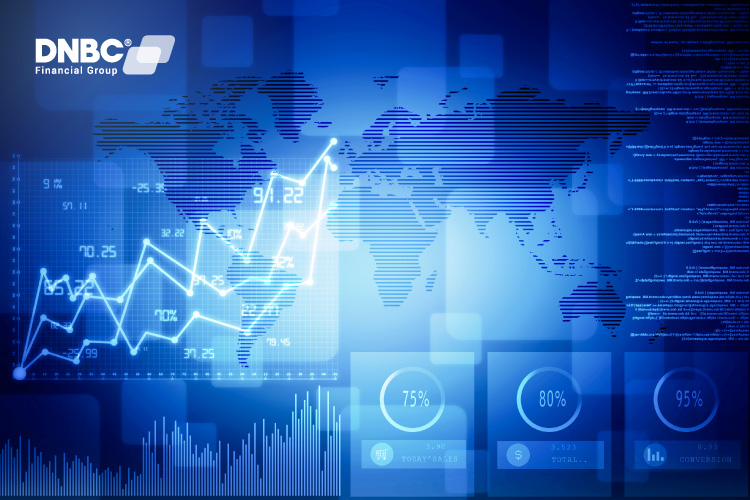Trends in payments are reshaping the way businesses and consumers engage with financial transactions, driven by technological innovation, evolving consumer behaviors, and regulatory requirements.
Prominent trends encompass the prevalence of financial technology solutions that prioritize mobile devices, an increased emphasis on safeguarding data privacy and security, and the exponential growth of electronic commerce transactions.
However, in addition to navigating these trends, businesses must contend with a complex landscape of obstacles, including establishing and maintaining consumer trust and the intricacies of regulatory compliance.
Moreover, businesses can secure a favorable position in the dynamic digital payments ecosystem by comprehending and adjusting to these worldwide trends and obstacles. Thus, this guarantees their strategies consistently prioritize user experience, innovation, and compliance.
Global trends and challenges of trends in payments
Trends in payments are undergoing a transformative evolution due to global trends and the associated challenges. Key trends include mobile-first fintech solutions and data privacy and security.
However, businesses must understand global trends and challenges. So that they can emerge trends and proactive strategies to adapt and address challenges in this dynamic ecosystem.
Global Trends in Digital Payments
1. Mobile-First Fintech
Mobile payments continue to dominate, accounting for over half of all transactions. As a result, the convenience of mobile wallets drives adoption.
2. Data Privacy and Security
Ensuring robust data protection is crucial. As digital payments grow, safeguarding sensitive information becomes a priority.
3. Digital Identity Authentication
Secure and seamless authentication methods, such as biometrics, enhance user experience and reduce fraud risks.
4. E-Commerce Surge
Online shopping transcends borders, driving digital payment growth. Accordingly, consumers increasingly embrace digital transactions.
5. Changing Regulatory Landscape
Regulations around payment security, privacy, and financial crimes evolve. So, staying compliant is essential for businesses.
6. Customer Communication
Effective communication with customers during payment processes enhances trust and satisfaction.
Challenges in Digital Payments
1. Regulatory Compliance
Navigating diverse regulatory frameworks across jurisdictions can be complex. Therefore, compliance with anti-money laundering (AML) and know-your-customer (KYC) rules is critical.
2. Cost Considerations
Adopting new payment technologies involves costs. Balancing innovation with cost-effectiveness is essential for sustainable growth.
3. Consumer Acceptance
While consumers are becoming more accepting of digital payments, factors like lifestyle, tech-savviness, and comfort with online transactions still influence adoption.
4. Technological Pace
Rapid technological advancements require businesses to stay agile. Keeping up with emerging models and technologies is a challenge.
5. Gaining and Maintaining Trust
Building and retaining consumer trust in digital payment systems is crucial. In addition, security breaches or privacy concerns can erode confidence.
In this dynamic landscape, businesses must balance innovation, compliance, and user experience to thrive in the digital payments ecosystem.
What are global trends in business
As we step into the future, the business landscape undergoes dynamic shifts driven by technological advancements, changing consumer behaviors, and global interconnectedness.
So, let’s delve into some of the key trends that will shape the business world in 2024!
- AI Revolutionizing Customer Experience
Artificial Intelligence (AI) has transcended sci-fi fantasies to become an integral part of businesses worldwide. It now powers personalized customer interactions, streamlines processes, and unlocks new efficiencies.
- Sustainable Business Practices Take Center Stage
Sustainability is not only a trendy term; it is a crucial strategic necessity. Companies increasingly consider environmental, social, and governance (ESG) considerations when making decisions. Aligning practices with long-term sustainability goals is no longer optional.
- Virtual and Augmented Reality Transform Industries
Augmented Reality (AR) and Virtual Reality (VR) technologies aren’t limited to gaming. Thus, they revolutionize training, design, and customer experiences across diverse real estate, healthcare, and retail sectors.
Rise of the Remote Workforce
The pandemic accelerated remote work adoption, reshaping office dynamics and collaboration tools. Therefore, businesses now embrace flexible work arrangements, impacting employee well-being and productivity.
Blockchain Revolutionizing Supply Chains
Blockchain technology ensures transparency, traceability, and security in supply chains. Consequently, it enables efficient tracking of goods, reduces fraud, and fosters stakeholder trust.
Hyper-Personalization in Marketing
Data-driven marketing takes center stage. As a result, businesses tailor offerings to individual preferences, delivering personalized content, recommendations, and targeted ads to enhance customer engagement.
Subscription-Based Business Models Prevail
From streaming platforms to meal kit services, subscription models thrive. So, businesses focus on recurring revenue, offering convenience and value to consumers.
Gen Z Takes the Spotlight
The youngest generation enters the workforce and consumer market: their unique preferences, values, and digital fluency shape business strategies and product offerings.
Agility and adaptability are the compass points for navigating these trends and seizing opportunities in the ever-evolving global business landscape.
Digitalisation and globalization of trends in payments
Digitalization and globalization play pivotal roles in shaping the landscape of digital payments, offering substantial support for business growth. Let’s explore how these trends intersect and contribute to economic advancement!
1. Digitalization of trends in payments
- Shift to Digital Channels: Traditional cash exchanges give way to digital alternatives. The convenience of digital payment methods—whether through apps, websites, or electronic devices—has transformed how we transact.
- Mobile Wallets: Mobile wallets like Apple Pay and Google Pay enable customers to securely make payments using their smartphones. These wallets store credit/debit card information, making transactions swift and seamless.
- Contactless Payments: Digitalization enables contactless payments via Near Field Communication (NFC) technology. Users can tap their cards or phones to complete transactions without physical contact.
- Online Banking: Digital platforms facilitate online banking, allowing users to manage accounts, transfer funds, pay bills, and access financial services from anywhere.
2. Globalization of trends in payments
- Cross-Border Transactions: Globalization facilitates seamless cross-border payments. Businesses can transact internationally without geographical constraints. Whether it’s a company paying suppliers in another country or an individual sending money to family abroad, digital channels bridge the gaps.
- E-Commerce Knows No Borders: Online shopping transcends national boundaries. Consumers can explore and purchase products from international vendors, leading to a global flow of payments.
- Remittances: Migrant workers benefit from globalization through instant digital channels. They can send money back home efficiently, supporting families and economies.
- Standardization: Globalization encourages standardization of payment protocols. Common standards enhance interoperability, making cross-border transactions smoother.
3. Synergy and Challenges of Digitalisation and globalization of trends in payments
Positive Synergy: Digitalization and globalization reinforce each other. As digital payment systems become more efficient, global trade and financial integration thrive. This synergy drives economic growth and connectivity.
Challenges to Address Globally:
- Privacy Concerns: Protecting user data and privacy is crucial. Striking a balance between convenience and security remains a challenge.
- Cybersecurity Threats: As digital payments expand globally, safeguarding against cyberattacks becomes paramount.
- Regulatory Disparities: Harmonizing regulations across borders ensures fair and transparent financial practices.
- Financial Inclusion: While digitalization expands access to financial services, ensuring that everyone—regardless of location or socioeconomic status—can participate remains an ongoing goal.
As a result, in this dynamic landscape, the fusion of digitalization and globalization reshapes how we interact with money, transcending borders and opening new possibilities.
Trends in payments
The landscape of digital payments continues to evolve in 2024. From cutting-edge security measures to personalized experiences, businesses are adapting to stay ahead.
Let’s explore the trends shaping how we transact in this dynamic era.
1. Building Core Strength
Efficiency is the name of the game. Treasurers are honing in on account structures to elevate cash management. With techniques like virtual account management and multi-currency pools, funds move seamlessly, empowering better-working capital management.
2. Modernization Imperative
Amidst fluctuating rates and geopolitical shifts, modernization is non-negotiable. From flexible platforms to real-time payments, businesses are revolutionizing how transactions flow.
3. Personalization in Payments
It’s all about the personal touch. As a consequence, customers crave bespoke experiences, driving demand for customized payment solutions that enhance satisfaction and loyalty.
4. Automated Security Measures
Safety first! Automated solutions are the new frontier, fortifying transactions with robust fraud detection, risk management, and seamless authentication.
5. Digital Wallet Adoption
Join the global movement towards digital wallets. With unparalleled convenience and versatility, they’re the go-to choice for modern payments.
6. Web 3.0 in Payments
Unlock the potential of blockchain and decentralized tech. As the internet evolves, so do payment ecosystems, paving the way for innovation and efficiency.
7. Battle Against Cybercrime
Stay one step ahead of threats. So, businesses are investing heavily in fortified defenses to protect transactions and customer data.
8. Buy Now, Pay Later (BNPL)
Flexibility meets convenience. As a consequence, BNPL services cater to consumer preferences for deferred payments, offering newfound freedom in spending.
Trends in Payments and DNBC’s Role in Global Business Expansion
Trends in payment are transforming global business, requiring organizations to adapt to efficiency, security, and innovation. Thus, DNBC offers international money transfers, facilitating cross-border transactions and contributing to global commerce.
Besides, by utilizing DNBC’s services, businesses can expand their consumer base, enter new markets, and form international partnerships.
Hence, this secure platform helps mitigate difficulties associated with international payments, allowing organizations to optimize processes, increase financial effectiveness, and capitalize on worldwide opportunities for development and expansion.
For a complimentary consultation on how DNBC can facilitate your global expansion, contact us today!
DNBC Financial Group is your trusted provider in international money transfer
- Get 100% free 1-on-1 support
- 100% free account opening
- Seamless onboarding process
Or please contact DNBC
Email: [email protected]
Phone Number:
- +65 6572 8885 (Office)
- +1 604 227 7007 (Hotline Canada)
- +65 8442 3474 (WhatsApp)



 DNBC Team
DNBC Team












